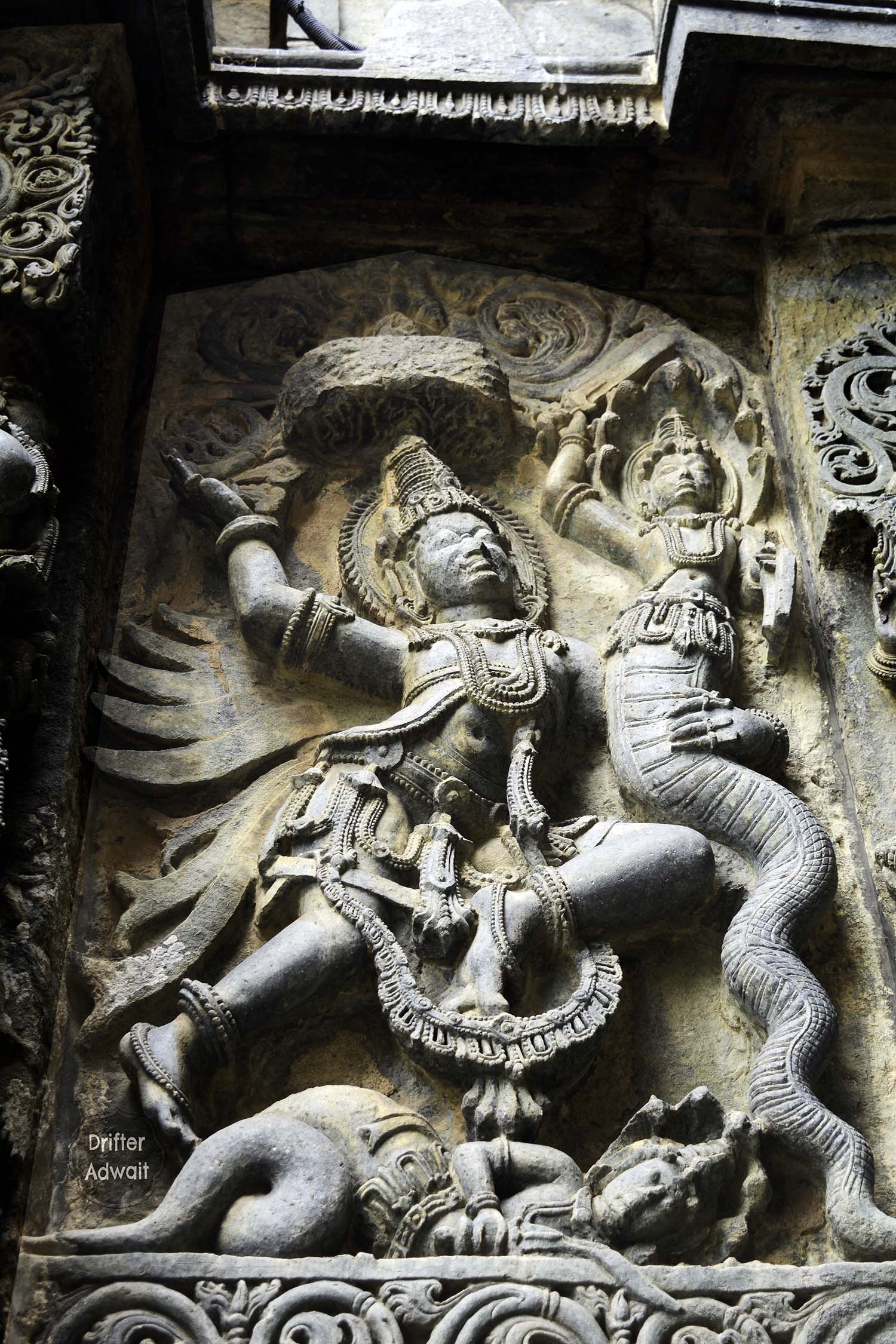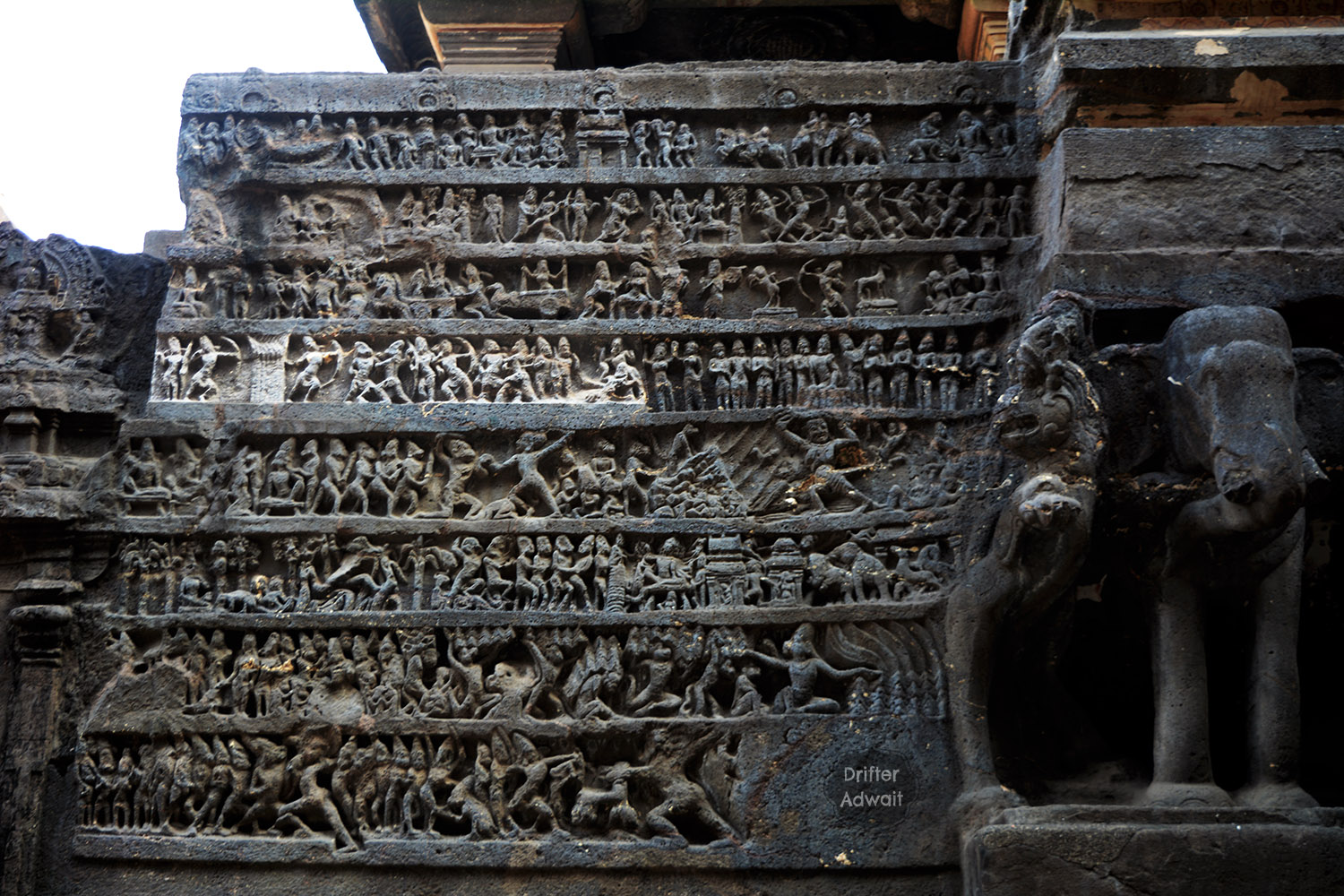Greetings, fellow Indology enthusiasts! Today, we’re going to talk about a bird that’s not your average tweetie-pie. We’re talking about Garuda, the legendary bird with a wingspan as wide as your local shopping mall.
Now, I know what you’re thinking – “Garuda? Isn’t that just a predatory bird?” Well, let me tell you, this bird is no one-hit-wonder. Garuda has been around for centuries, making appearances in ancient mythology, epic poems, and even modern art.
In fact, Garuda is such a big deal that architects and sculptors have been trying to capture his essence for thousands of years. From temple carvings to modern sculptures, Garuda has been depicted in countless ways, each reflecting the unique style and culture of the era.
But before we dive into the world of Garuda sculptures, let’s first explore the origins of this magnificent bird through our ancient scriptures. Trust me, it’s a story that’ll make you wonder why birds don’t rule the world…yet.
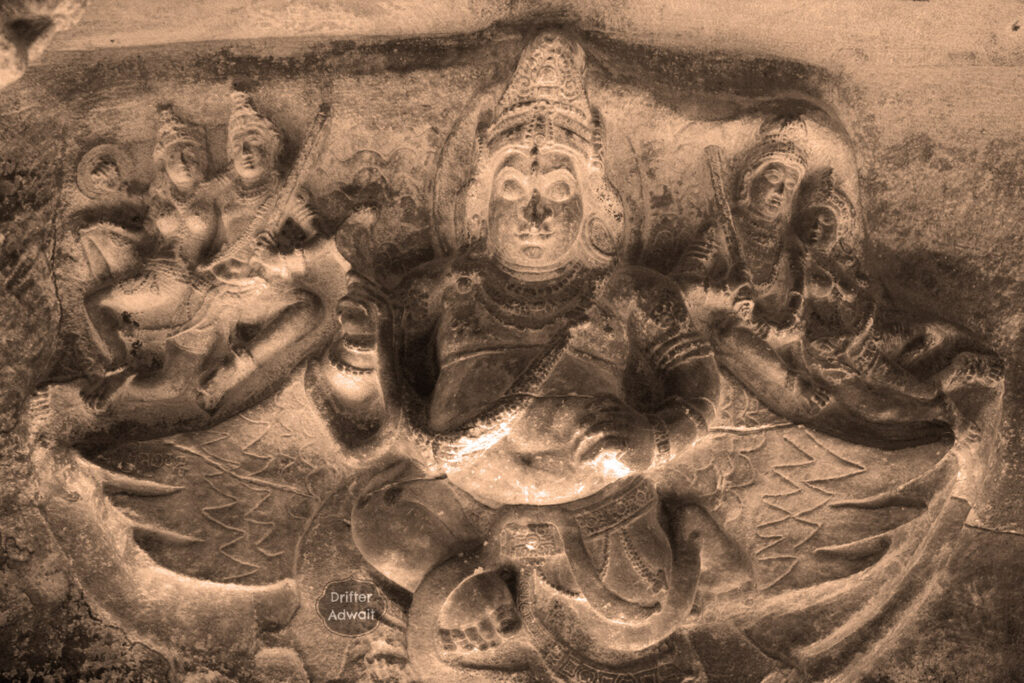
The curse that led to the Birth
Prajapati Kashyap was performing a holy Yadnya ritual intending to have a son. Given its divine nature, the Gods and sages contributed to the proceedings. Indra, the Lord of the heavens, and other sages were assigned the task of gathering Samidhas (dry twigs used as offerings in the sacred Yadnya fire), and they carried out their duties with utmost dedication and according to their abilities.
As the mighty Lord, Indra was carrying a mountain of twigs for the Yadnya offerings when he came across a rather amusing sight. The Balakhilya Rishis, who was no bigger than half a thumb, struggled to carry a single tiny twig toward the venue with great effort.
प्रलीनान् स्वेष्विवाङ्गेषु निराहारांस्तपोधनान् । क्लिश्यमानान् मन्दबलान् गोष्पदे सम्प्लुतोदके ||
They had given up the food. Austerities were their only wealth. They seemed to be rather shrunk in their own bodies. They used to have a lot of trouble even in crossing the Pugmarks of the cow filled with water. They had very little physical strength.
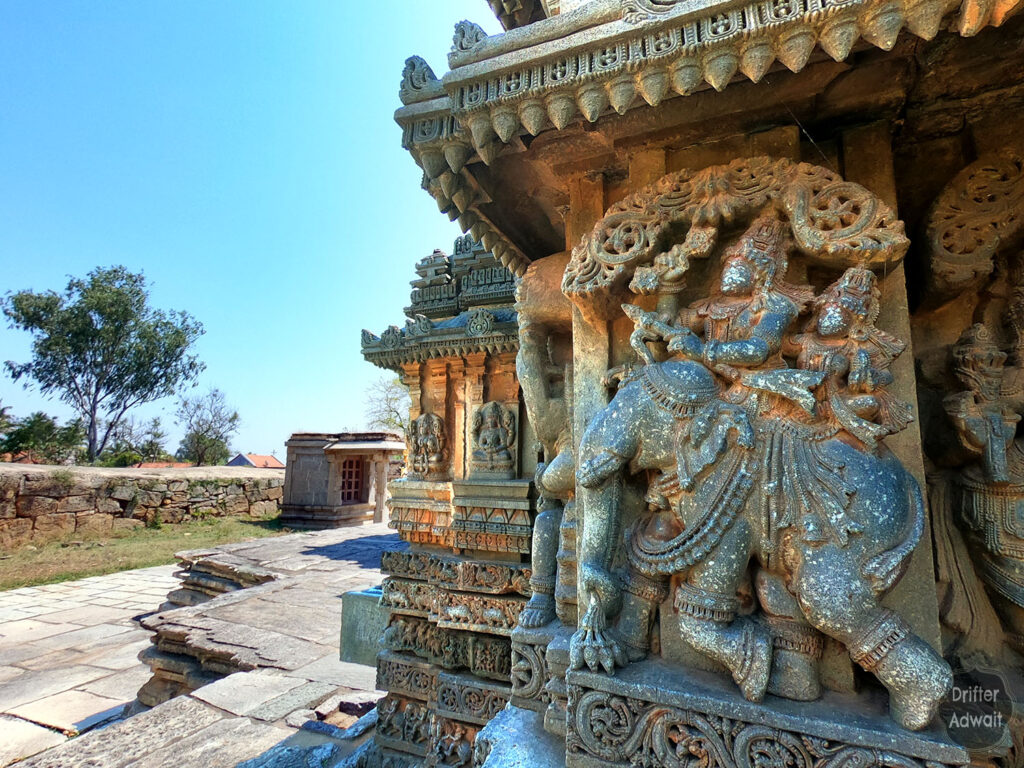
तान् सर्वान् विस्मयाविष्टो वीर्योन्मत्तः पुरन्दरः । अवहस्याभ्यगाच्छीघ्रं लङ्घयित्वावमन्य च ।।
तेऽथ रोषसमाविष्टाः सुभृशं जातमन्यवः । आरेभिरे महत् कर्म तदा शक्रभयंकरम् ॥
Indra, intoxicated with the pride of his power, looked at them all with astonishment and, laughing at them, humiliatingly overcrossing over them and hurried forward. Balakhilya sages got furious due to Indra’s behavior. Heavy anger rose in their hearts. So they started such a great action at that time, the result of which was terrible for Indra indeed.
The Maharishis, who practiced the most rigorous austerities with complete self-restraint, declared, “Another Indra should be born for all the gods, who would strike fear in the heart of the present Devaraj Indra. This new Indra should be bold and courageous, with the power to move at will throughout the universe. He should be a hundred times more formidable and swift than the current Indra, moving faster than even the speed of thought.” With these words, they set about working on this ambitious project of another Indra.
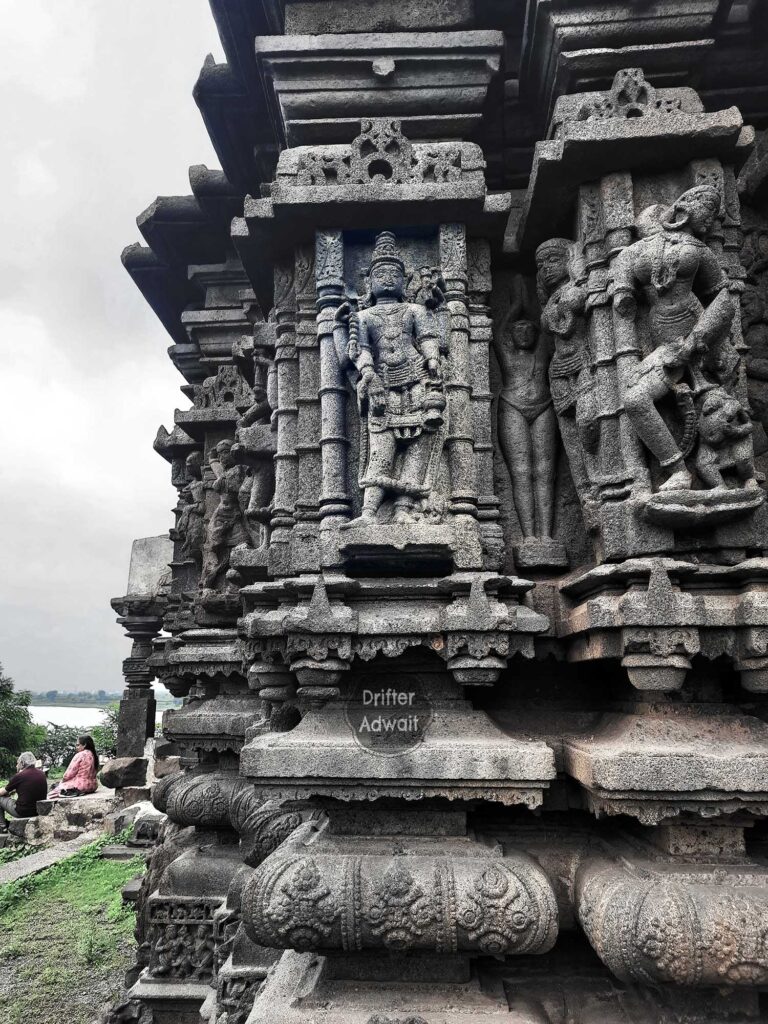
Upon learning of this, Indra was left disappointed and furious, and he eventually surrendered himself to Prajapati Kashyap. Prajapati Kashyap then approached the Balakhilyas and enlightened them on the fact that Brahma had appointed Purandar as the current Indra, governor of the three worlds. However, in respecting the Balakhilyas’ intentions, Prajapati Kashyap said:
न मिथ्या ब्रह्मणो वाक्यं कर्तुमर्हथ सत्तमाः । भवतां हि न मिथ्यायं संकल्पो वै चिकीर्षितः ।।
भवत्वेष पतत्त्रीणामिन्द्रोऽतिबलसत्त्ववान् । प्रसादः क्रियतामस्य देवराजस्य याचतः ।।
Saints-Mahatmas! Do not misrepresent the words of Brahmaji. Along with this, I also want that your desired resolution should not be in vain. Therefore, this future son, full of great strength and excellent qualities, may be the Indra of the birds. Devaraj Indra has come to you as a supplicant; please bless him.
The situation had become quite complex. Kashyap performed a Yadnya for progeny, while the Balakhilyas had a Sankalpa for another Indra. To resolve this dilemma, the Balakhilya sages urged Prajapati Kashyap to accept the fruit of their Sankalpa as their own progeny. Pleased with this solution, Sage Kashyapa and his wife Vinata accepted it. Prajapati Kashyap also warned Indra not to underestimate the sages’ power, which was mightier than even Indra’s thunderbolt.
Later on, Vinata gave birth to two sons, Aruna and Garuda. Aruna was crippled and chosen as Lord Surya’s charioteer, and Garuda was made the Lord of the birds.
The bet
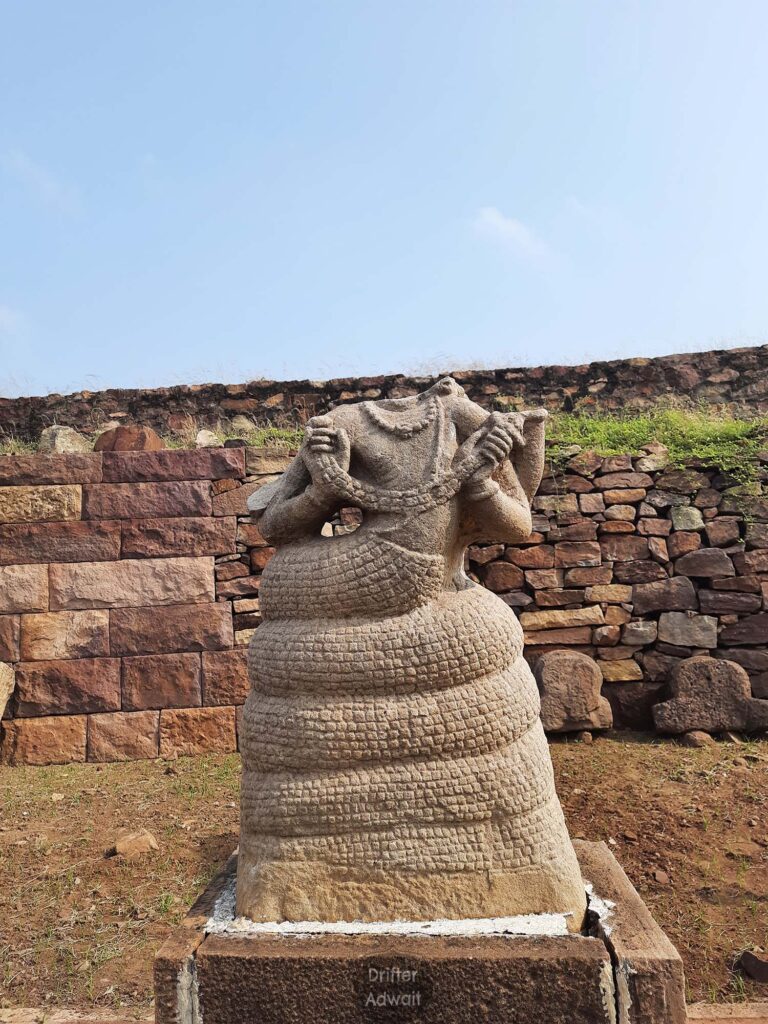
Vinata had a sister named Kadru, who is known to be a mother of serpents. Once, Vinata and Kadru made a bet about the color of the tail of Uchchaihshravas, the divine horse. Kadru claimed that the tail was black, while Vinata claimed that it was white.
To settle the bet, they approached their sons for help. Kadru’s sons, the Nagas, agreed to help their mother by coiling themselves around the tail of Uchchaihshravas, making it appear black. As a result of losing the bet, Vinata became the servant of Kadru and her serpent sons. Snakes promised to release Vinata from the captivity of Kadru only if Garuda brought them the Amrit. Garuda, who was devoted to his mother, agreed to help her.
Adventures of the Garuda
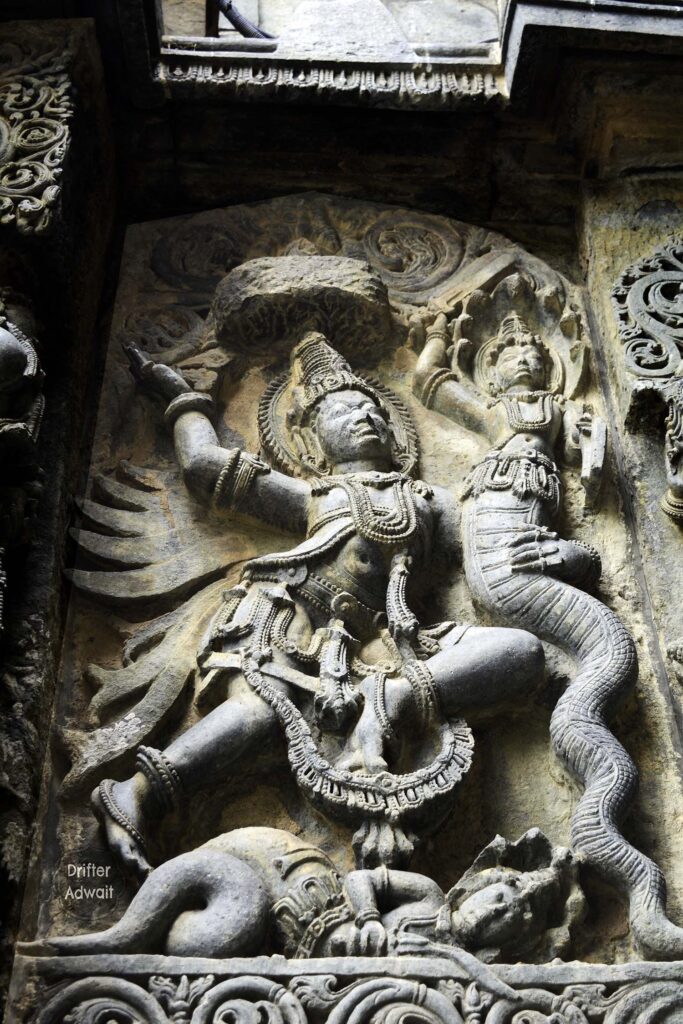
After Garuda was born, he felt an unimaginable hunger. His parents pointed towards an island which was the home of Nishadas (immoral meat eater hunters).
तदाननं विवृतमतिप्रमाणवत् समभ्ययुर्गगनमिवार्दिताः खगाः । सहस्रशः पवनरजोविमोहिता यथानिलप्रचलितपादपे वने ।।
ततः खगो वदनममित्रतापनः समाहरत् परिचपलो महाबलः । निषूदयन् बहुविधमत्स्यजीविनोबुभुक्षितो गगनचरेश्वरस्तदा ।।
Thousands of birds, disoriented and distressed by the wind and dust in a storm-shaken forest, take to the sky in frenzied flight. Similarly, thousands of Nishads, dazed by the relentless onslaught of wind and dust, found themselves unwittingly swallowed up by Garuda’s enormous gaping mouth. Garuda, the swift, powerful, and formidable King of birds known for causing trouble to his enemies, narrowed his jaws to destroy the many Nishads who earned their livelihood by killing fish.
Despite this, Garuda remained unsatisfied. He proceeded to a nearby lake and picked up a colossal turtle and an enormous elephant, holding one in each talon. He took flight and, after covering thousands of miles, alighted upon a colossal tree with branches stretching for hundreds of miles. The tree shook violently, on the brink of collapse, when Garuda spotted Valakhilya Rishis practicing asceticism while hanging upside down from a branch.
ऋषयो हात्र लम्बन्ते न हन्यामिति तानृषीन् । तपोरतान् लम्बमानान् ब्रह्मर्षीनभिवीक्ष्य सः ॥
हन्यादेतान् सम्पतन्ती शाखेत्यथ विचिन्त्य सः । नखैर्दृढतरं वीरः संगृह्य गजकच्छपी ।।
स तद्विनाशसंत्रासादभिपत्य खगाधिपः ।शाखामास्येन जग्राह तेषामेवान्ववेक्षया ॥
Seeing those Brahmarshis performing penance hanging on the branch of the tree, Garuda thought – ‘Rishis are hanging in it. If they are not killed by me, this falling branch will definitely kill these sages.’ Thinking of this, Garuda, the mighty King of the birds, firmly caught hold of the elephant and the tortoise with his claws and, fearing the destruction of those great sages, snatched that branch in his beak. Garuda did such a wonderful feat in protecting those sages.
अतिदैवं तु तत् तस्य कर्म दृष्ट्वा महर्षयः । विस्मयोत्कम्पहृदया नाम चक्रुर्महाखगे ।।
गुरुं भारं समासाद्योड्डीन एष विहंगमः । गरुडस्तु खगश्रेष्ठस्तस्मात् पन्नगभोजनः ।।
Seeing such a supernatural act of Garuda, which even the Gods could not do, the Maharishis were astonished. Their hearts trembled, and they named that great bird Garuda (the derivation of his name Garuda is like this) -This serpent-eating bird flying in the sky has flown with a heavy load; That’s why (according to this etymology, ‘ gurum aday uddin iti garudah’) they will be called Garuda.
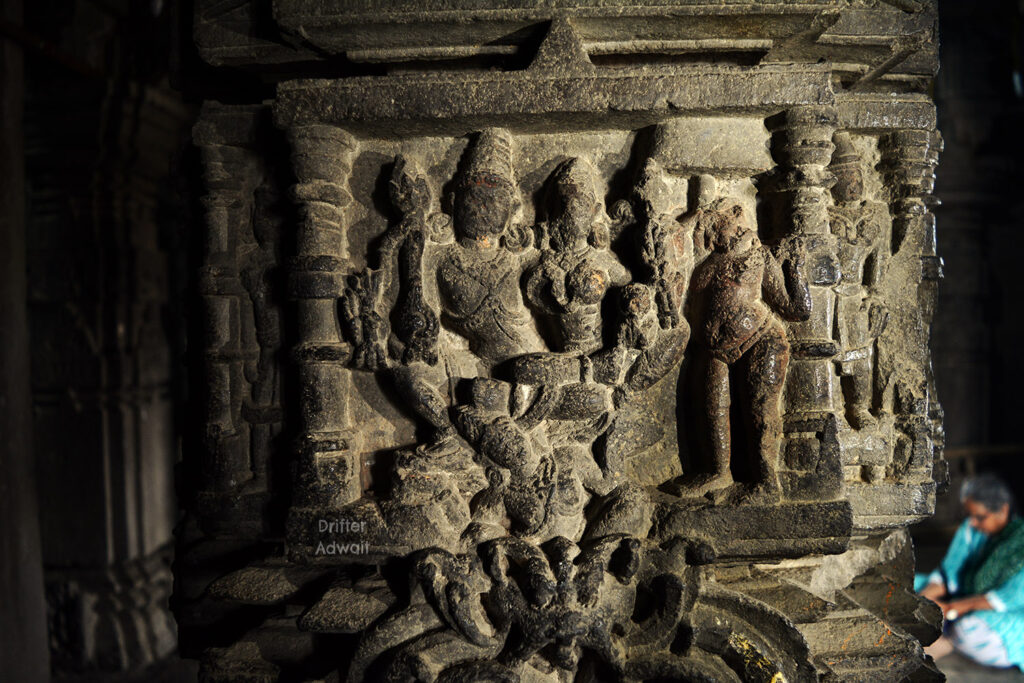
Afterward, the Valakhilya rishis departed from the branch at the behest of Garuda, who subsequently left the enormous branch on the ground. Following this, Garuda consumed a turtle and an elephant atop a mountain peak. Then, he turned towards Swarga to fulfill his promise and free his mother from slavery.
A warning was issued to Indra and the other Gods by Bruhaspati about Garuda’s power. In response, the divine armies assembled, equipped with celestial weapons and vehicles, to confront the King of the birds. Vishvakarma was assigned to protect the Amrut.
Garuda’s gigantic wings created a storm that covered the entire universe with dust, making it impossible for the gods to see what was happening. Garuda then attacked the Gods with his sharp claws and wings. Indra ordered Vayu to remove the dust with stronger winds, but Garuda continued to assail the Gods relentlessly.
Pakshiraj defeated Sadhya, and Gandharva fled toward the east. The Vasus and the Rudras took refuge in the south, while the Adityas fled west. The Ashwini Kumaras sought refuge in the north. These mighty warriors fled in panic, constantly looking back over their shoulders.
After killing them, Pakshiraj proceeded to obtain the nectar, but he was confronted by a raging fire that engulfed the sky with its flames. The flames grew higher and higher, leaving him unable to obtain the nectar.
ततो नवत्या नवतीर्मुखानां कृत्वा महात्मा गरुडस्तरस्वी । नदीः समापीय मुखैस्ततस्तैः सुशीघ्रमागम्य पुनर्जवेन ।।
ज्वलन्तमग्निं तममित्रतापनः समास्तरत्पत्ररथो नदीभिः । ततः प्रचक्रे वपुरन्यदल्पे प्रवेष्टुकामोऽग्निमभिप्रशाम्य ।।
Then the fierce Mahatma Garuda, having manifested eight thousand one hundred mouths in his body, drank the water of the rivers and again, coming there with great speed and poured all that water on that burning fire. In this way, Garuda, the vehicle of torture to the enemies, took another very small form with the desire to reach the nectar by extinguishing that fire with the water from the rivers, and he went ahead to snatch the pot filled with Amrut.
After that, as the speed of water enters the sea, in the same way, Garuda, the King of birds, assuming a golden form shining like the rays of the sun, forcefully entered the place where the nectar was kept. There, he saw an iron wheel with a very sharp edge, continuously rotating around the pot of Amrut.
There, under the chakra, two great snakes were appointed to protect the nectar. Tehir radiance seemed like a burning fire. Like lightning, these mighty snakes had fluttering tongues, a resplendent face and shining eyes. Their eyes were full of anger and poison, they never use to blink and anyone who sees even one of them could be instantly reduced to ashes.
तयोश्चक्षूंषि रजसा सुपर्णः सहसावृणोत् । ताभ्यामदृष्टरूपोऽसौ सर्वतः समताडयत् ॥
तयोर समाक्रम्य वैनतेयो ऽन्तरिक्षणः । आच्छिनत् तरसा मध्ये सोममभ्यद्रवत् ततः ॥
समुत्पाटयामृतं तत्र वैनतेयस्ततो बली । उत्पपात जवेनैव यन्त्रमुन्मध्य वीर्यवान् ॥
The beautiful winged Garuda suddenly closed their eyes by blowing dust and being invisible to them; he started killing and crushing them from all sides. Vinata Kumar, the great warrior roaming in the sky, attacked with speed and cut the bodies of both snakes in the middle; Then he rushed towards the nectar, and by breaking the disc, he flew away with great speed, lifting the pot of nectar.
Shri Hari Vishnu and Garuda
As promised to the snakes, without touching even a drop of the nectar, Garuda just lifted the whole pot and left quickly. Disregarding the sun’s light, he took a flight without any sign of fatigue. While flying ahead, he encounters someone he didn’t expect.
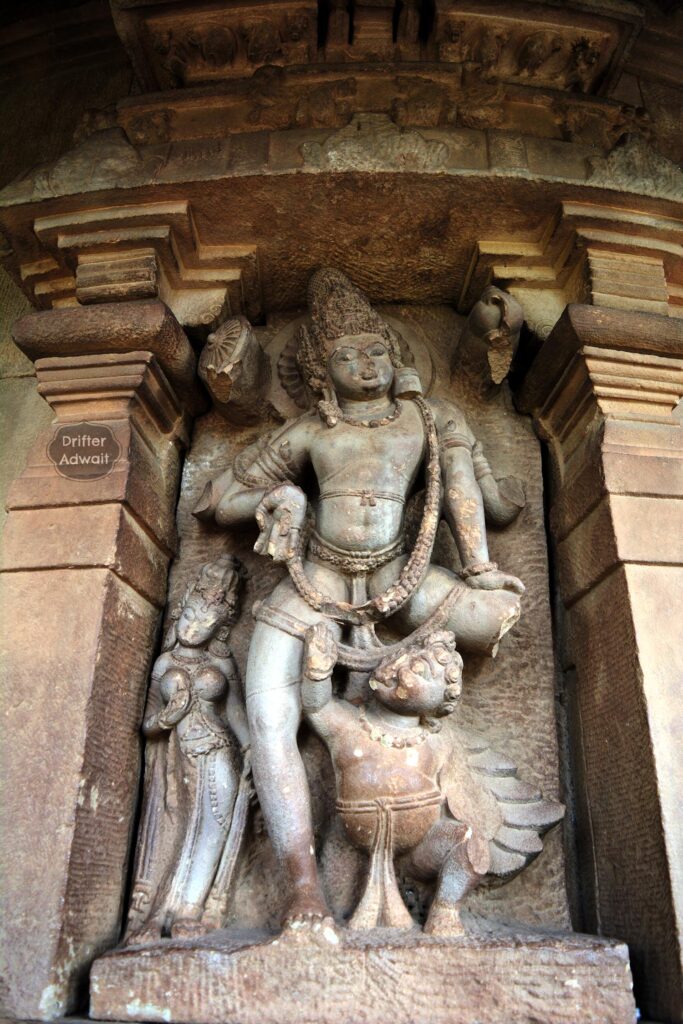
विष्णुना च तदाकाशे वैनतेयः समेयिवान् । तस्य नारायणस्तुष्टस्तेनालौल्येन कर्मणा ॥
तमुवाचाव्ययो देवो वरदोऽस्मीति खेचरम् । स बजे तब तिष्ठेयमुपरीत्यन्तरिक्षणः ॥
At that time, Vintanandan Garuda met Lord Vishnu in the sky. Lord Narayan was greatly impressed with Garuda’s insatiable prowess. Therefore, that imperishable Lord Vishnu said to the sky-carrying Garuda – ‘I want to give you a boon.’ “Lord! May I be situated on you (in the flag)” asks Garuda.
उवाच चैनं भूयोऽपि नारायणमिदं वचः । अजरश्चामरच स्याममृतेन विनाप्यहम् ।।
Having said this, he again spoke to Lord Narayan like this – ‘Lord! Without drinking nectar, may I become immortal’.
Then Lord Vishnu said to Vintanandan Garuda – ‘Evamastu’- So be it. Garuda said to Lord Vishnu- “God! I also want to give you a boon. May God also ask for one.” Shri Harine asked Mahabali Garuda for a boon to be his vehicle, which Garuda proudly accepted.
After successfully obtaining the immortality elixir, Garuda faced a difficult decision. He had promised the Nagas, a group of serpents, that he would bring them the Amrit in exchange for his mother’s freedom. However, he knew that the elixir could not fall into the wrong hands, as it would upset the balance of power in the universe.
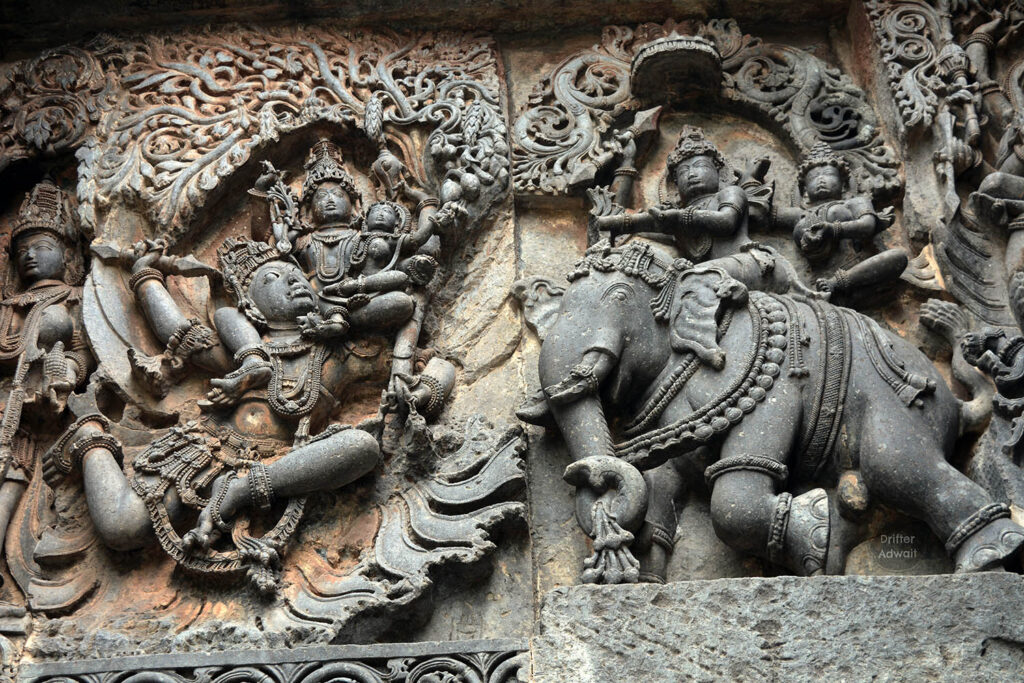
Indra, the King of gods, saw Garuda’s dilemma and offered him a solution. He approached Garuda with an extended hand of friendship and gave him an idea to keep his promise to the Nagas without endangering the universe. Garuda agreed to the plan and carried the elixir pot to the Nagas.
As the Nagas were about to drink the elixir, Garuda reminded them to cleanse themselves before consuming it. Once they were clean, the Nagas were allowed to drink the Amrit. Garuda fulfilled his promise, and the Nagas freed his mother, Vinat, from slavery.
सोमस्थानमिदं चेति दर्भास्ते लिलिहुस्तदा । ततो द्विधाकृता जिह्वाः सर्पाणां तेन कर्मणा ॥
As all the snakes went to take a bath, Indra appeared and picked up the pot of elixir. He returned it to its original place in Svarga, as planned. However, during the commotion, a few drops of the Amrit fell on the sharp blades of grass. The snakes licked the grass, resulting in their tongues split. Since that day, snakes have had split tongues.
In conclusion, Garuda’s loyalty and intelligence helped him keep his promise to the Nagas without upsetting the balance of power in the universe. Indra’s assistance and Garuda’s quick thinking prevented chaos, and a unique quirk of nature was created. Sagas and Puranas mention many stories related to Garuda, but to avoid diversion, we will discuss them some other time.
What does Murti Shastra say about Garuda sculptures?
Vishnu Dharmottara Purana, while describing the form of Garuda, has written that his body is green, eyes are round, the nose is like Kaushik, and he has four arms and two wings. His two arms are in Anjali mudra; in two others, he holds a parasol and a full pot, representing Amrut. There is a great deal of similarity in the descriptions of the Puranas. Vishnu Dharmatottara accepts the notion of four arms of Garuda, while in some other scriptures, it is said to be equipped with eight more weapons like chakra, pestle, Ankush, etc.

In ancient scripture of Roop Mandan, it is said, that,
ताक्ष्यों मकड़ कतः प्रक्षः (मरकतप्रस्यः) कौशिकाकारनासिकः । चतुर्भुजस्तु कर्त्तव्यो वृत्तनेत्रमुखस्तथा ॥
गोरुजानुचरणः पक्षयविभूषितः । प्रभासंस्थानसौवर्णः कलापेन विभूषितः ॥
Garuda’s complexion is like turquoise and his nose is like the nose of an owl. He should be made four handed, and his face and eyes in a round shape. Garuda’s thighs, legs and feet are like those of a vulture and he is adorned with two legs. His aura (Prabhavali) is of his own color (like turquoise).
छत्रश्च पूर्णकुम्भञ्च करयोस्तस्य कारयेत् ।करद्वयञ्च कर्त्तव्यं तथा विरचिताञ्जलि’ ॥
नवताल: प्रकर्तव्यो गरुडो मानसूत्रतः । पादजानुकटिर्घा (टिया) वदचयां वाहनस्य दृक् ॥
Parasol and full pot should be made in both his hands and other two hands should be made in Anjali Mudra. According to Maan-Sutra, the idol of Garuda should be made in nine Taalas. The feet of his statue and the part from the knees to the waist should be bent from the feet to the waist in such a way that it can be Vishnu-Vahana.
यदुश्च भगवान् पृष्ठे छत्रकुम्भधरौ करौ । किञ्चिल्लम्बोदरः कार्यः सर्वाभरणभूषितः ॥
वामोग्रे कुञ्चितः पश्चादन्यपादस्तु जानना । पृथिवीं संस्थितो यत्र गारुडं स्यात्तवासनम् ॥
Lord Yadu (Krishna) is seated on his back while the Garuda holds an umbrella and a pot in his hands. He is somewhat pot-bellied and is adorned with all kinds of ornaments. The left leg is slightly crooked (Kushchit) and the other leg is turned back from the Janu and is situated on the earth. This is called Garudasan.
In conclusion, Garuda is not just a fascinating creature from ancient Indian mythology but also a symbol of strength, loyalty, and determination. His stories and depictions in various art forms, including the intricate sculptures of the Murti-Shastra style, have captivated people for centuries and continue to inspire artists and writers today.
From the bet between Vinata and Kadru to Garuda’s heroic journey to obtain the elixir of immortality, Garuda’s stories teach us valuable lessons about the power of determination, friendship, and honor. And as we delve deeper into Garuda’s legend, we can also appreciate the richness and complexity of Indian mythology and its enduring impact on art, culture, and philosophy.
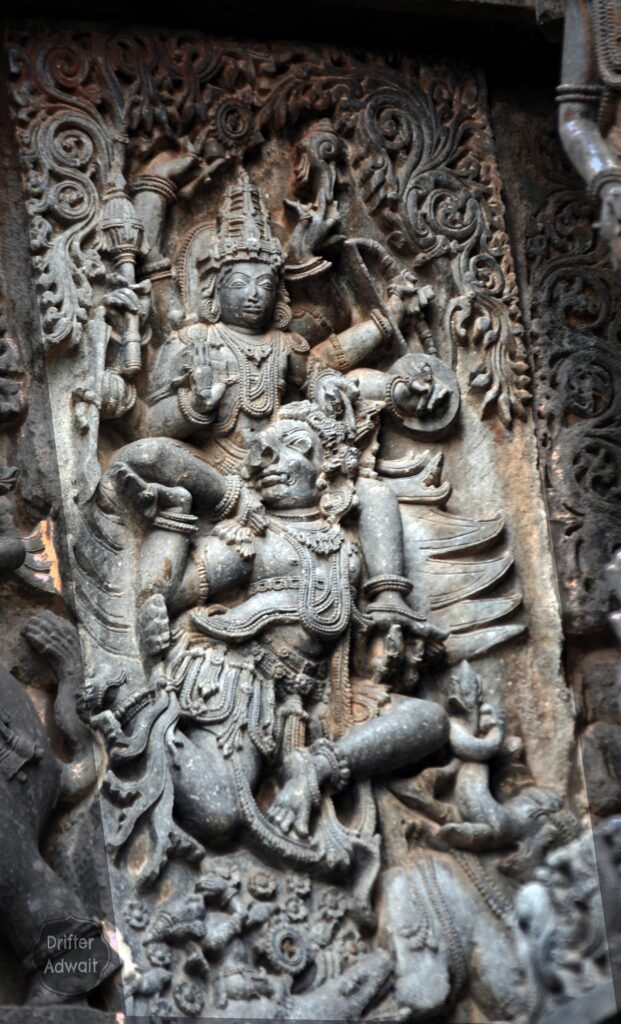
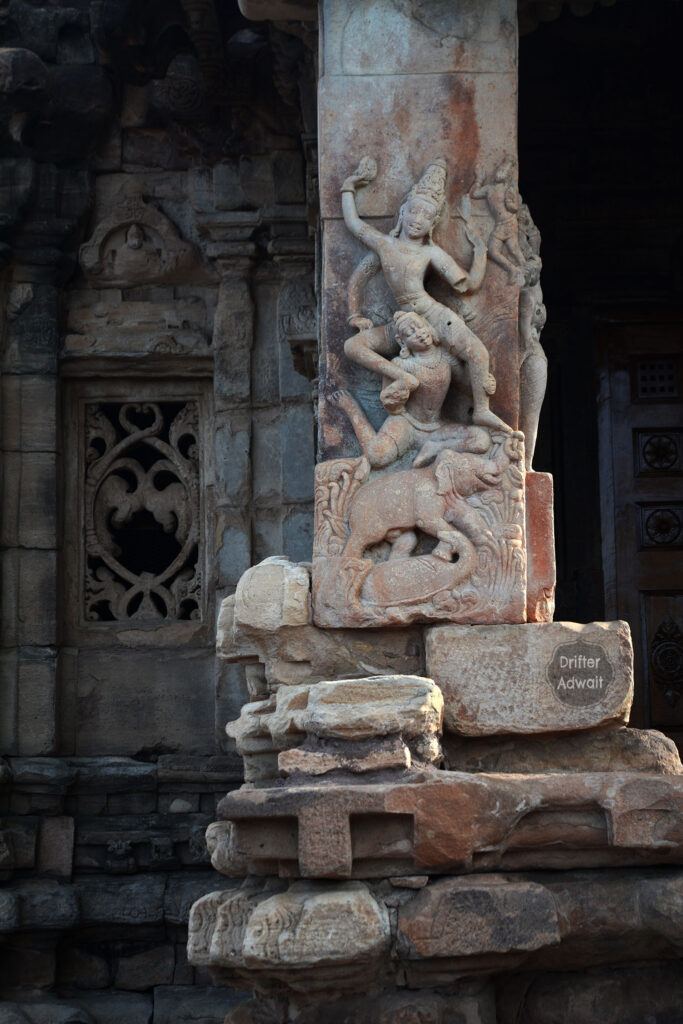
So the next time you see a majestic bird soaring in the sky, imagine Garuda and his incredible feats. And if you’re lucky enough to come across a sculpture or painting of Garuda, take a moment to admire its beauty and the intricate details that bring this mythical creature to life. You may even find some inspiration in Garuda’s story and take on your challenges with renewed vigor and determination, just like the King of Birds.
As we end another fascinating journey through the rich Itihasa of India, I hope you have enjoyed learning about the unique architecture and captivating sculptures that adorn our ancient temples. My mission with DrifterAdwait.com is to shed light on the wonders of our heritage and inspire a love for our shared cultural legacy.
If you found this post informative and entertaining, please share it with your friends and family interested in India’s rich cultural heritage. Don’t forget to comment and let me know which temple you’d like me to explore next.
And as always, keep exploring, keep wandering, and keep discovering the magic of this beautiful land!
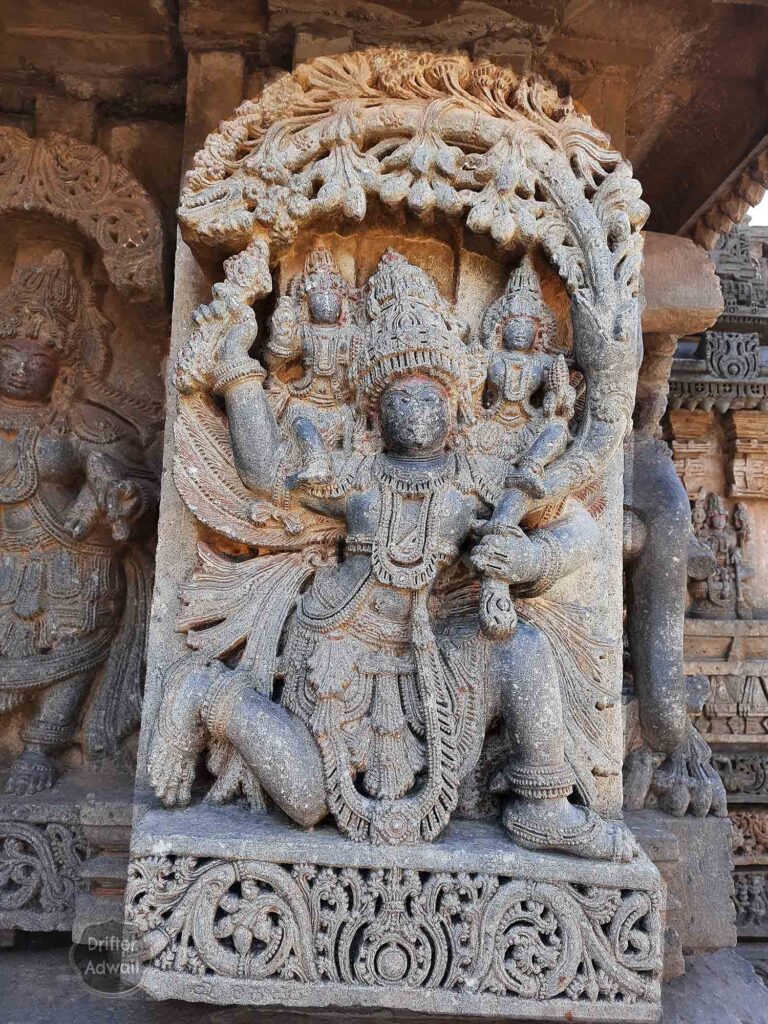
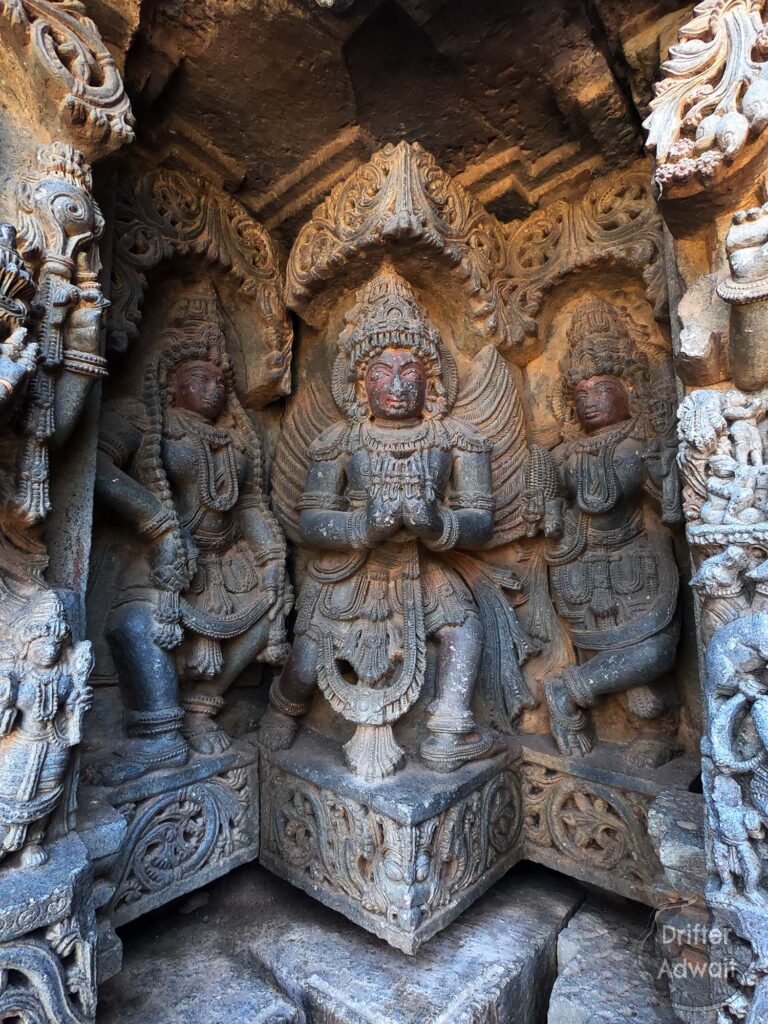



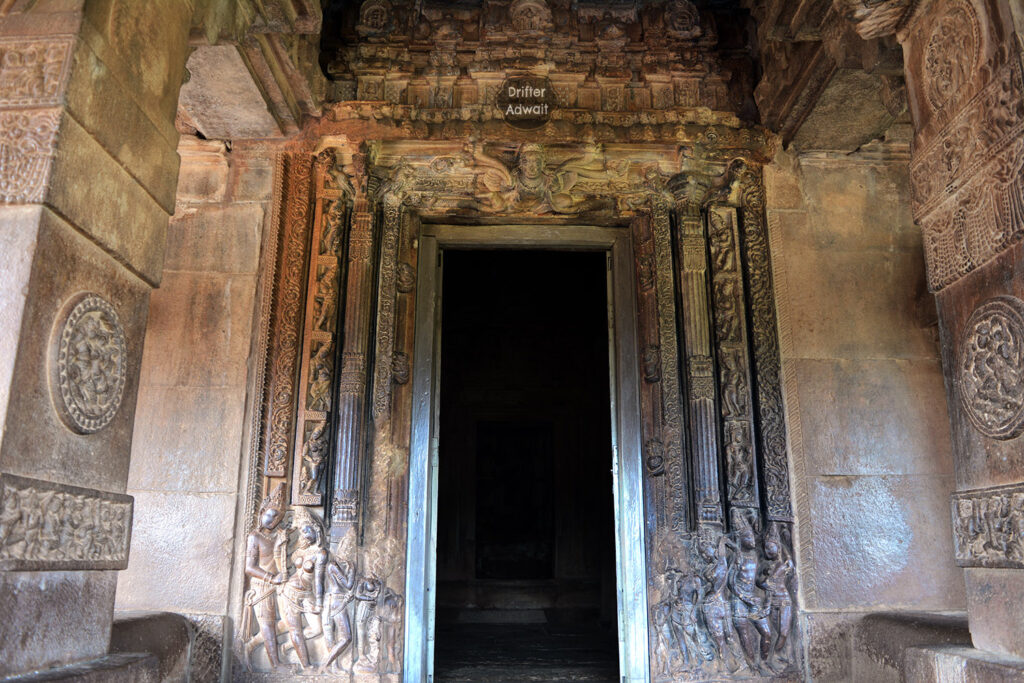
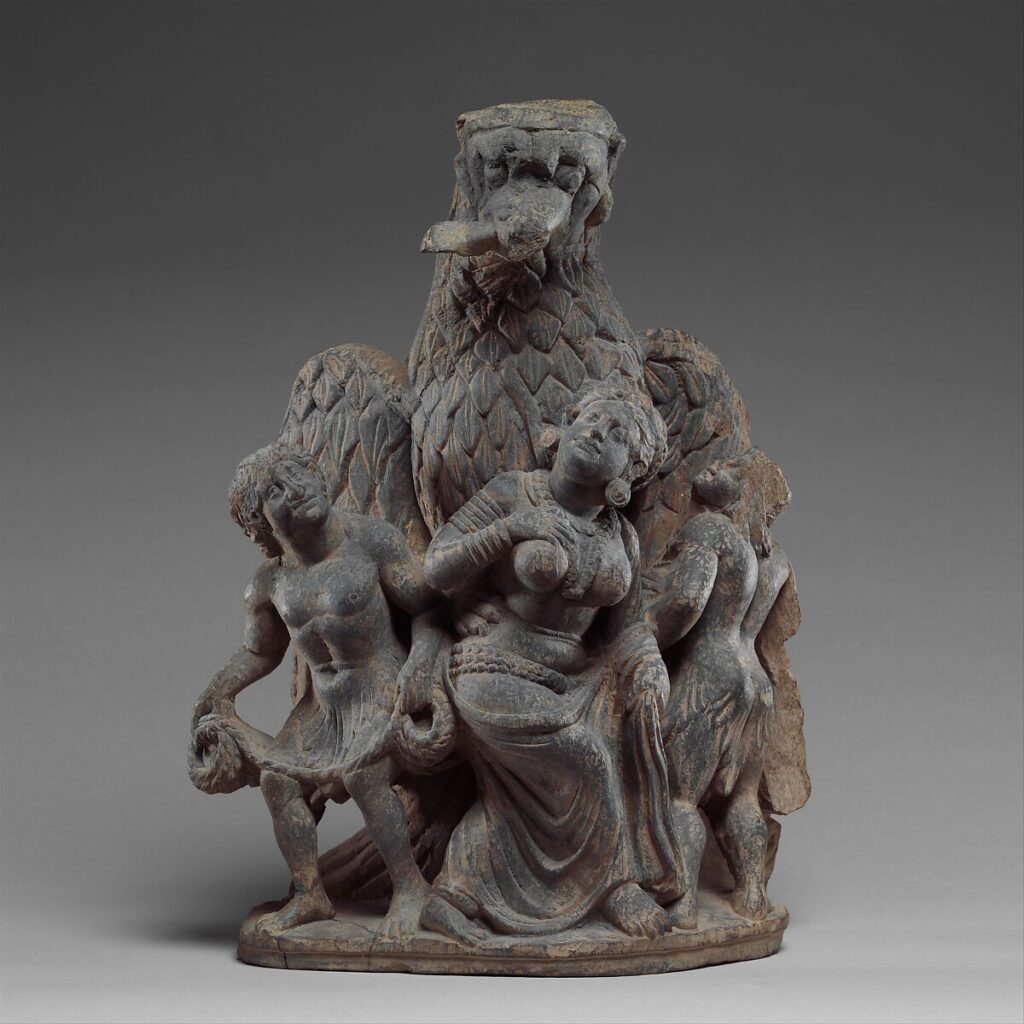
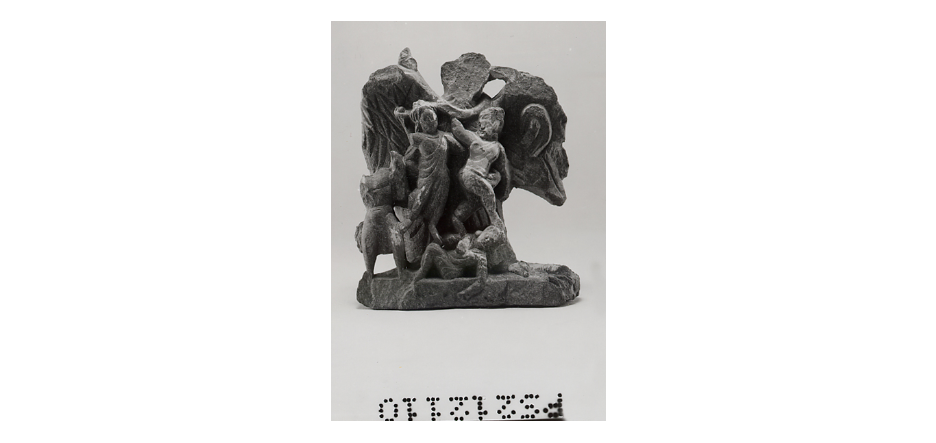
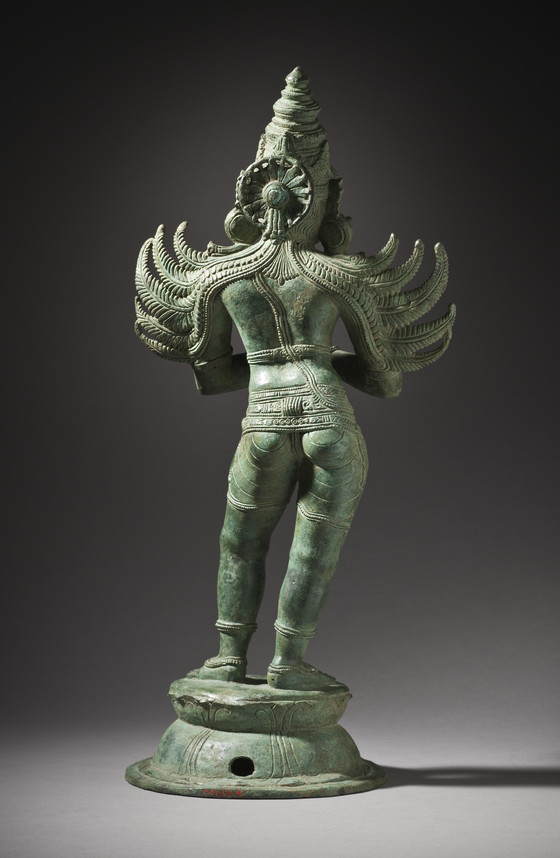
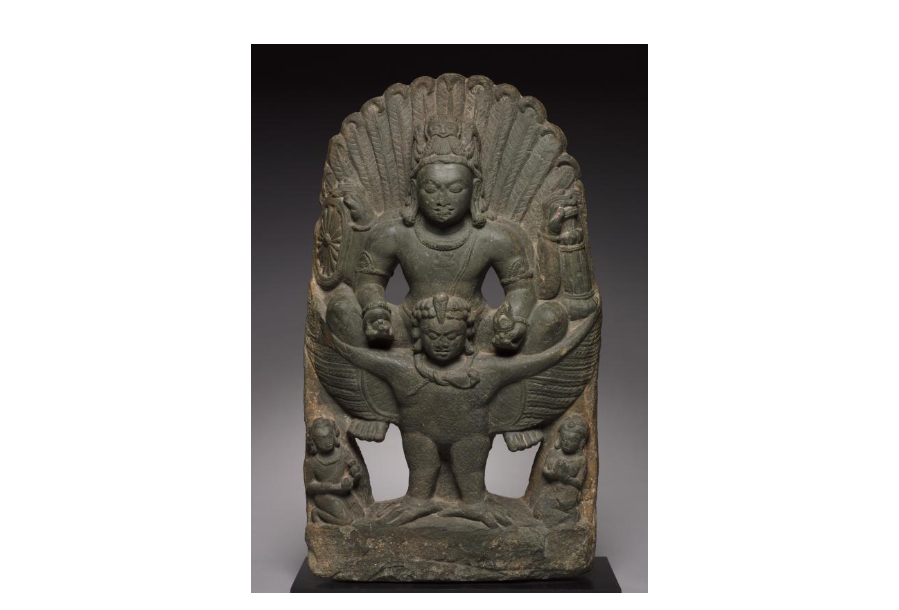
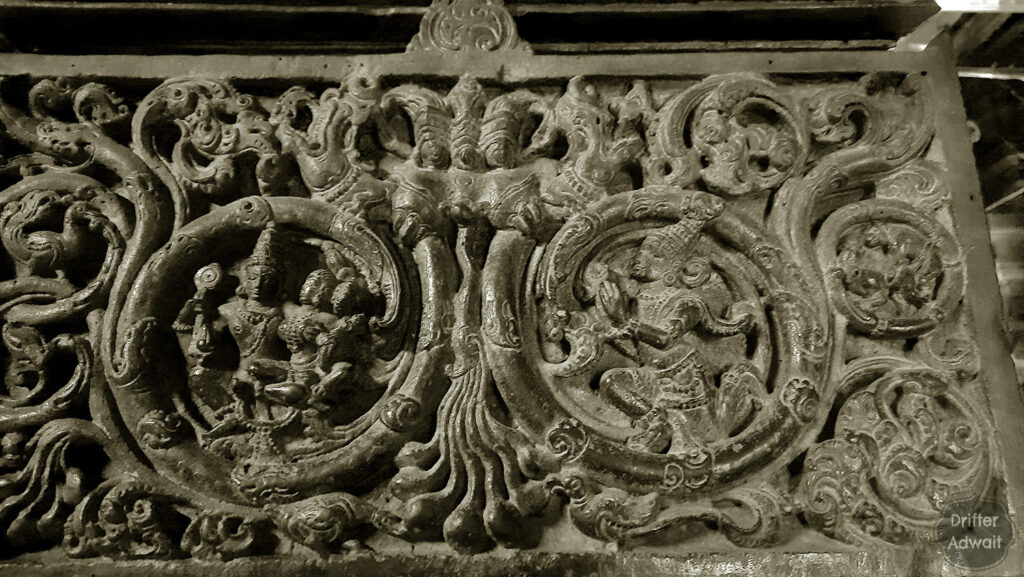
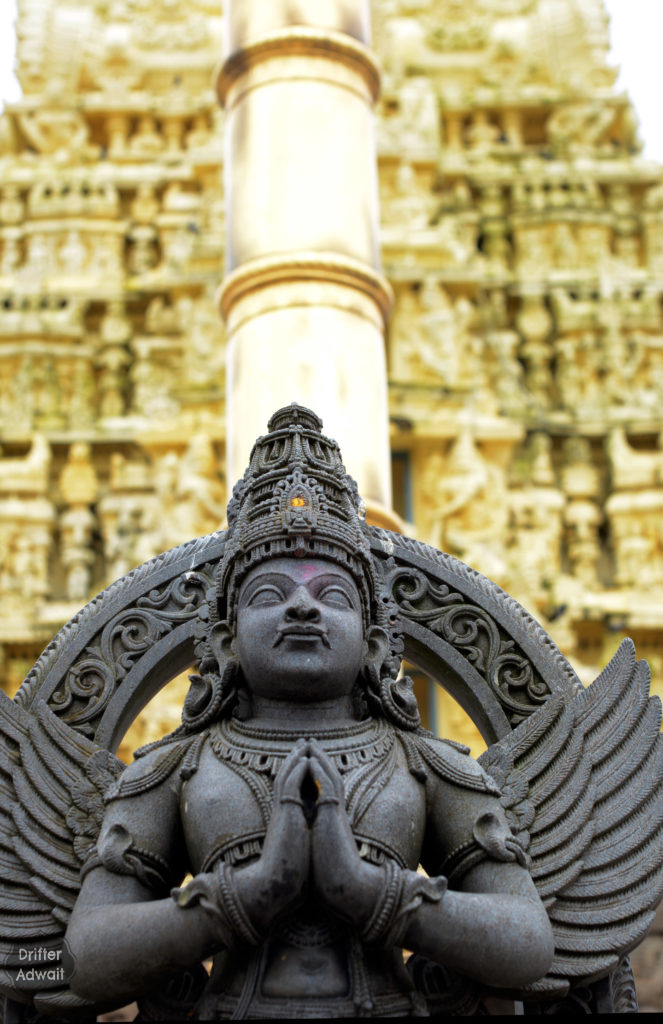
References:
1. Bhartiya Murtishastra, N. P. Joshi, Second Edition (1 January 2013), Prasad Prakashan, Pune, Maharashtra, India.
2. Mahabharat Vol. 1, Geeta press Gorakhpur.
3. https://collections.lacma.org/node/2267306
4. https://www.metmuseum.org/art/collection/search/38213?ft=garuda&offset=0&rpp=40&pos=18
5. https://www.clevelandart.org/art/1961.46
6. https://www.britishmuseum.org/collection/object/A_1888-0806-2
7. https://philamuseum.org/collection/object/95885
